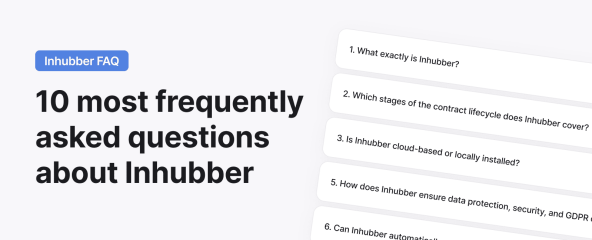
Why is a tenant list important? When selling a rented property, it is advisable to attach a tenant list to the purchase agreement. From a legal point of view, this ensures that the transfer of tenancy agreements — including rights and obligations — from the seller to the buyer is properly documented.
Already during the due diligence phase, a tenant list is required. The buyer, or the real estate agent offering the property for sale, creates a tenant list based on the available lease agreements. This process takes time and concentration, tying up valuable staff resources. Each lease and every amendment must be reviewed manually, with key data entered into an Excel spreadsheet. Depending on the size of the property and available staff, this can take hours or even days.
The work requires precision and focus, since the buyer will use the tenant list to calculate whether the property will be a profitable investment.
Why a correct tenant list matters
The annual net rent is a key factor in calculating Return on Investment (ROI) or Return on Equity (ROE).
That’s why it’s important to work with great accuracy and to take into account potential leverage effects such as future rent increases. Any errors in calculating ROI or ROE can significantly distort the assessment of a property’s profitability. These key performance indicators are an essential part of real estate valuation and play a decisive role in the purchase decision.
A correct and complete tenant list is also necessary to leverage financing effects.
Even a single mistake — for example, entering the wrong rent amount or misplacing a decimal point — can lead to an incorrect ROI or ROE calculation.
Work, time, and money…
For this reason, buyers often have to verify or recreate tenant lists themselves. However, the process of creating such a list based on existing lease agreements can now be solved within seconds using the Inhubber SaaS application.
How to create a tenant list
As part of the due diligence process, the buyer receives the property’s lease agreements from the seller or agent. These can then be uploaded to the Inhubber platform. Once uploaded, the system’s artificial intelligence (AI) automatically reads the contract metadata within seconds — including details such as:
- Start and end dates of the tenancy
- Net rent, service charges, and gross rent
- Apartment size and other key information
With a single click, a CSV file is generated that contains all the extracted metadata from the analyzed contracts. This saves a tremendous amount of time, as the AI works quickly, precisely, and without fatigue.
This function is not only useful for brokers, buyers, and project developers — it also benefits property management companies. Each time a new lease is added, Inhubber automatically updates the tenant list.
Manual data entry into an Excel file is no longer necessary.
Always up to date
A correct tenant list is an essential reference when buying a property. It provides the buyer with a quick and comprehensive overview of all rental relationships and is therefore a central document during due diligence — and later, during financing, when the bank requests an up-to-date tenant list.
The tenant list also serves the seller by documenting the buyer’s knowledge of the existing leases, ensuring that the buyer cannot later claim warranty rights related to the transferred tenancies.
For property managers, the tenant list is also a key tool for keeping an overview of the properties they manage.
With Inhubber – accuracy in seconds
With Inhubber, users can generate a complete and accurate tenant list within seconds — without manually reviewing or retyping data from lease agreements. This not only saves time and money but also ensures precision and transparency throughout the property transaction process.





